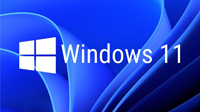Computer Software for Steel Professionals
Structural Material Manager Version 18.0 Upgrade

Export of Length-Nested Report to .CSV Files: The Length-Nesting Module can now export its nested results to .CSV files. Such files can be easily imported into Excel. This provides the ultimate in flexibility for those wishing to gain access to the nesting pattern without printing it to paper, viewing it as a PDF report, etc.
Improved SDS/2 Imports: Many different steel detailing systems export their bills of material to Structural Material Manager. We work closely with the companies producing those systems to provide optimal import compatibility.
The system already had strong support for files exported from Design Data’s SDS/2 package. Based on actual files provided to us by end-users, Version 18.0 has been upgraded to further enhance the SDS/2 import experience.
HY80, HY100 and HY130 Material Grades: High-yield steel grades are now supported. Version 18.0 can thus accept HY80, HY100 and HY130 material.
Separate Default Grade for Large-Diameter Pipes: The system now allows a separate default grade to be specified for pipes with diameters exceeding 12".
Consider a couple of examples. A 6" pipe might commonly use a default grade of A53, and that user-defined grade would be applied to pipes in general. A 14" pipe, by contrast, might need a default grade of A252-3, and that different (but also user-defined) grade will now be automatically applied.
Up-Arrow and Down-Arrow Move Between Fields: Officially-speaking, Windows expects the Tab key to move forward to the next control and the Shift-Tab combo to move back to the previous one. Of course Structural Material Manager has always supported that standard, expected behavior.
Some users are accustomed to the down-arrow moving down to the next field with the up-arrow moving back up to the previous one. Version 18.0's Material Entry Screen now supports that alternate manner of moving between fields. The only exception: when the current control is a drop-down list (bolt diameter, pipe strength, etc.), as up- and down-arrows must still cycle between list values in that context.
Auto-Increment of Piece Marks: The Material Entry Screen now features a button that automatically populates the Piece Mark field with an incremented copy of the last-used mark.
Suppose a material list is entered manually rather than being imported. If Piece Mark 400-10 was the last item’s Piece Mark, a quick click on the new “Fill Piece Mark with Incremented Copy of Last-Used Piece Mark” button will automatically place 400-11 in the Piece Mark field.
Alphabetic auto-increments are also supported, too, so that 67-B can automatically become 67-C.
Additional Aluminum Tubes: Many additional aluminum tubes have been added to Version 18.0's internal size library. This includes some mill-order-only items such as TS 2 ½ x 2 ½ x 3/16 Grade 6063.
Additional Display Styles: Version 18.0 triples the number of user-selectable display styles that control how Structural Material Manager’s Graphical User Interface (GUI) elements appear. Now with 182 possibilities, there is surely a style that will suit your individual tastes and eyesight.
Cyan Dusk was the previous default style. It remains available, but all users are encouraged to try the new Clear Day style which is now the default.
Please click here to view our video regarding Display Styles if you are not already familiar with the concept.
Improved Performance: Version 18.0's executable code has been produced in an upgraded programming language “compiler.” That compiler has been touted by some in the software industry as a “huge leap forward” regarding its math performance improvements.
Windows 11 Compatibility: The Version 17.x-series of Structural Material Manager was produced in a programming language compiler well-suited to Windows 7, 8/8.1 and the early Windows 10 releases. The same new language compiler that brings about the performance improvements described in the previous section is geared toward WIndows 11 and the newewr Windows 10 updates. Rest assured, however, that Structural Material Manager Version 18.0 still runs great even under older Windows versions despite the fact that it is now optimized for Microsoft’s newest releases.
Installation to Arbitrary Paths and UNC Paths: Since Structural Material Manager first became available in 1985, its setup program has required the destination to be a drive letter. A local system might have been installed on Drive C:, and a network one perhaps was installed on say Drive F:, P:, S: or whatever mapped drive letter company personnel shared. In any event, a drive letter was required, and the setup program built an \EJE folder subordinate to that drive letter.
Although drive-letter installations are still fully supported, and an \EJE folder is still used, Version 18.0 is the first system to allow installation to arbitrary paths. Uniform Naming Convention (UNC) paths are now also supported.
Since arbitrary paths are now supported, you might install to P:\Shared\AllUsers in which case the setup program will create a P:\Shared\AllUsers\EJE folder.
UNC paths are in the form of \\server_name\resource_name. A Structural Material Manager system might now be installed to say \\production_server\drive2 or 192.168.10.1\shared as a couple hypothetical examples. Again, the setup program will create an \EJE folder as necessary so that, in keeping with these examples, \\production_server\drive2\EJE or 192.168.10.1\EJE would be the ultimate UNC paths.
Upgrade Price Quote and Ordering Info: If you are an existing customer with an older Structural Material Manager version, please e-mail us at Sales@ejeindustries.com to obtain a price quote on the latest upgrade. You can then use the Online Upgrade Order Form to conveniently place the order for the latest Structural Material Manager upgrade.
Other Upgrade Versions: This page specifically covers Version 18.0 upgrade features. For information concerning other upgrade versions, visit our main Structural Material Manager upgrade page which contains links to pages describing improvements in each software release from Version 10.1 (circa 2007) to the present.